Guess what! It’s a review: Here are our thoughts on Sugarcraft at 59E59
Not to be Dramatic, but Hannah is Eating
I have something a little different to offer you all today: A theater review that I co-wrote with my best friend Zoe.
My worst-kept secret is that I used to be a huge theater freak. I owe a lot to theater: When I met Zoe in our collegiate a capella group, the Cardinal Sinners (brilliant name, middling-to-decent quality), we first bonded over a love of musicals, and have been friends ever since. One of my first-ever newspaper articles was Zoe and my co-written review of Wesleyan’s 2019 production of Eurydice.
Now, I’m a food writer (duh), she’s still a theater reviewer (check out her newsletter, Not to Be Dramatic), and when I got invited to attend a press preview for Sugarcraft — a theatrical performance where the actors serve real ice cream — I knew exactly who I should take with me.
Sugarcraft is a 90-minute play by Danny Tieger about Mary Eales, the author of an 18th-century recipe book. Eales’s claim to fame is that she once served her sweets to Queen Anne, including the novel-back-then dish of ice cream. The ingenious move that the Sugarcraft team has pulled off here is integrating real food into the show: After the play ends, individually-packed tubs of Ample Hills ice cream inspired by Eales’s historical recipes are served to the audience.
Here’s my convo with Zoe, which we held on the train ride home after the play. (My voice memo app is fantastic at picking up voices over the scream of subway brakes, and also we edited this a bit.)
Sugarcraft: A review in conversation
Hannah Berman: Okay, so I figured we should start by doing a little plot summary. Zoe? What happened?
Zoe Kaplan: Okay. This is a show about Mary Eales (played by Julie Congress).
HB: Who's a confectioner — she prefers to be called a confectioner, not a chef or baker.
ZK: She was a confectioner for Queen Anne. When we meet her, she’s trying to sell a book of recipes, which she calls “receipts,” to a publisher. She’s also about to perform a recipe-making demonstration for another member of royalty, Lady Dupray (played by Steven Conroy). As the show goes on, we figure out why she’s doing it — we learn her history in real time as she makes the recipe.
HB: It’s a very fourth-wall-breaking production. When you come into the theater, everyone gets given a name. Mine was Artemisia Grace — I was one of the country’s first lady novelists, just for the record.
ZK: I was Virginia Banks, born in Pennsylvania, and I find London overwhelming and incomprehensible.
HB: And that’s probably true about you.
ZK: So true. It’s very theatrical in that way, but I like that they bring you in. It’s a small, intimate space — we were right on top of one another — but they use that small space and their small cast well. They move through a lot of different settings while staying in one space.
HB: Yeah, they’re very effective with it — they use paintings on the wall, spotlighting them to indicate where the action takes place. What did you think of the cast?
ZK: I really loved the woman who played Mary — Julie. She was great. Very real. At first, it was hard to track her background and choices, but it unraveled over time, and I understood her better retroactively. She changes accents a few times, and you come to understand why.
The other actors — mostly the two men, who play multiple parts, including women — were just overdramatic at times. Hoity-toity accents, giant facial expressions, and physical comedy. It got laughs from the audience, but some felt like cheap laughs — more for the bit than for the story.
HB: I usually love when people ham it up in theater. I can appreciate big, goofy acting, but I was surprised by how much they relied on drag for humor. Lady Dupray is a man in a ridiculous woman’s costume, and it’s played for laughs. That feels out of vogue.
ZK: Yeah. Like, the whole Mrs. Doubtfire thing — there was a moment where that was big, but by the time the Broadway version came out, I felt like we were done with that. But this show still got laughs for it.
MTA: Stand clear of the closing doors, please.
HB: It totally did. The accent issue was also big for me. It was very obviously Americans doing various English accents. The differences were meant to denote class, but none were particularly convincing.
There’s also a seventh-grade actress in the cast (we saw Lilybeth Linda Guzman) — she plays Mary’s daughter. She was adorable, but they gave her new lines an hour before the show, and she had to read them from a box in the final scene. That was tough, but she did well otherwise.
ZK: She was really good. Hopefully, she’ll be more confident as the run continues.
Should we talk themes?
HB: Yeah!
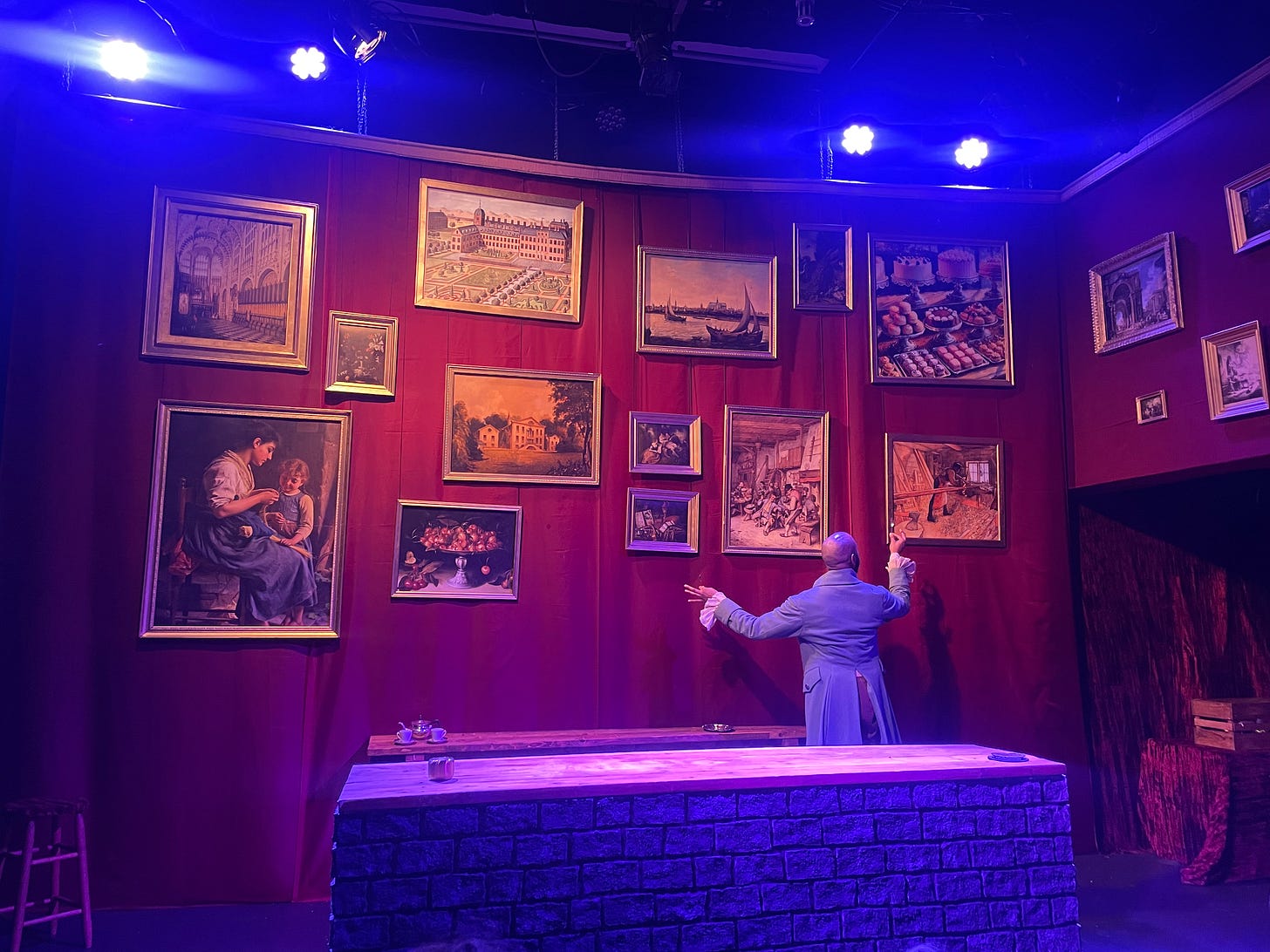
ZK: This show surprised me! I thought it was just going to be more surface level and plot-oriented, but there was a focus on this theme of creating joy in the moment. We understand that Mary likes being a confectioner because she likes giving people joy with her food. And then we got ice cream at the end, which was joyful! I was charmed.
HB: I love that. There was also this refrain she repeated: cooking is going from order to chaos to order. She said it like a chant, and I liked that. That felt like an interesting way of thinking about the act of being culinary.
ZK: Yeah, she was like a magician — entrancing. It reminded me of Lessons in Chemistry. And also, the idea that she was making something once exclusive to royalty accessible to regular people.
I also loved how they emphasized that recipes back then had no measurements. She gave cues like, “You’ll know it’s ready when you touch the pot and can’t hold your fingers on it for more than five seconds.” Super intuitive!
HB: That really inspired me to cook more instinctively… Usually, I’m meticulously following my New York Times recipes, very painstakingly measuring out every single thing. Like, mise en place-ing everything before I even start.
ZK: Right! No half cups, no sifters. She sifted with her hands!
HB: She sifted with her HANDS!
Okay, let’s talk about the cooking itself. It’s supposedly all done in real-time on stage, but clearly, some magic was involved.
ZK: We saw jam being cooked, a whole cake being assembled, and ice cream getting churned.
HB: But the cooking itself… I was a little bummed. I thought we’d see more actual food being made.
ZK: Same. We get a bit of it, but it’s hard to extend our belief that it’s really becoming this magical cake and good jam. There’s this part where Mary is trying to explain how you can tell when jam is ready — it’s supposed to drip off your spoon like syrup, not water. But when they held up the spoon, it totally just dripped like water, and they went on with it.
And there was no fire! Probably a good call, but I wish they had depicted it somehow — it’s so important to cooking.
HB: We do get the actual churning of the ice cream, which is nice. The play asserts she invented the prototype for the ice cream machine, but that seemed… not historically accurate.
ZK: I think the truth is she had the first recorded English ice cream recipe. I mean, they didn’t have much to go off in terms of making it historically accurate.
HB: Yeah, we went to a talkback after the show, and the director (Ryan Emmons) mentioned that the inspiration for the piece was the actual book of “receipts” Mary Eales wrote. They happened upon it and were inspired by the way the recipes were written — the pattern of the language — and immediately thought of how to make something of Mary’s character when they read them. But there isn’t much else out there on her, so they seem to have done a lot of inventing.
Okay, can we talk spoilers? The best moment of the show?
ZK: Yes.
[Spoiler alert, obviously.]
The whole time, Mary is cooking for Lady Dupray and her audience, and we know that there's some other reason that she's there, but we're not sure what it is. There’s also something mysterious going on behind the counter. Then, about three-quarters in, the counter flips around, the action that we've been seeing over the course of an hour and 15 minutes is condensed into two minutes, and we get to kind of rehash everything that's happened and see what she's actually been doing behind it.
HB: While she's been preparing the cake and the ice cream that we've been seeing from the front, she's also been secretly preparing these very special almonds that are coated in toffee and then dipped in luxurious chocolate, which she has spoken about before — she served them to Queen Anne. And she’s making them so her daughter can taste chocolate for the first time. It's a wordless montage of movement, and it's set to — what kind of instrument would you call that? Like a banjo, a string instrument of some sort? I thought it was by far the best moment of the show.
ZK: Everything builds to that. A lot of things come together in a really nice way. It’s a very well-written show because you can just see everything clicking into place — why she’s doing this, why it matters.
Let’s talk about the ice cream. I loved it, and I think having ice cream is important, but because the almonds were so important, I wanted the almonds.
HB: I can’t believe the ice cream didn’t have the almonds! I totally agree. Probably an allergy thing?
So this ice cream is made from — let me consult my notes — it’s a partnership with Ample Hills, and it’s made from a cream cheese base with their signature Ooey Gooey Butter Cake, toffee chips, and caramel swirl.
I actually didn’t even have any toffee chips in my portion. I just tasted the caramel swirl and the Ooey Gooey Butter Cake, which has historically been the best Ample Hills flavor. Ample Hills is a longtime Brooklyn ice creamery — I’ve been going since I was maybe 12 years old, RIP to its original version, and Ooey Gooey Butter Cake is by far their best flavor. I was so stoked to see that.
ZK: And Mary has been making a cake, so I think that ingredient fit really well into the ice cream. And the ice cream that she’s making on stage is vanilla — the one we were eating — which was cool, to have that consistency.
HB: The cream cheese base was really rich, which made the ice cream feel more decadent and fit the vision of this being a kind of prehistoric version of what we know as ice cream. I thought that was a really great choice for the show.
ZK: Yeah. I think I just would have wanted maybe some chocolate almonds on the side.
HB: 100%.
ZK: They were so important to the story! I mean, the reason she goes to Lady Dupray’s house is because she needs the right stove — the one only royal people have — to make chocolate for her daughter. That was really special. I wanted that joy that all the characters experienced with eating the almonds to be given to us as well.
HB: It was torture to watch all these actors react so orgasmically to eating these little morsels and then have to wait the entire show for my own! It did make it more exciting and a huge payoff once I finally got my little greedy paws on the ice cream, but let me tell you, it was a long wait. Even though it was only a 90-minute show.
ZK: Yeah. And when it ends and you finally get the ice cream, it kind of brings you back into that joy Mary talks about, which I think was effective.
HB: Tell me, is this the type of thing you normally enjoy? Did you enjoy this?
ZK: I did! When we walked in and during the first couple of scenes, I wasn’t sure. I was kind of suspicious of it, I think just because I wasn’t sure how they were going to handle the limited resources — only four actors, tiny stage. That doesn’t mean great things can’t come from that, but I wasn’t sure how they would make it work.
But instead of treating it like a limitation, they made it an essential part of the performance — having actors play multiple characters, using paintings as the set, really making use of the space they had. And the play itself was very well written. It built and came full circle, and it had a lot of heart.
I was very charmed. That’s my overall impression — charmed and joyous, with ice cream. What’s your overall take?
HB: I came in suspicious as well. I was regarding it more as an experiment than a theater performance, but it was a theater performance — and I was pleasantly surprised. I thought it was really sweet, and loved the ice cream, even without almonds.
It seems like a great show to take a 14-year-old to. There were a bunch of seventh graders in the audience fangirling over the little girl who played Lizzy. They were asking the sweetest questions after the show. One of them asked, “How did you have the idea to do ice cream?” or something like that. And it does genuinely seem to spark joy.
ZK: And there were lots of laughs. I think it’d be great for a 14-year-old, or a grandmother, or an ice cream lover. Maybe even someone who isn’t necessarily a theater person but loves food. Luckily [gestures to Hannah], you’re both.
HB: And in that way, we bridge the gap between our two spaces.
ZK: Wow, look at us. A collab.
HB: Okay! I think we’re done here.
Sugarcraft will be up til March 15, and tickets are available here. Also, if you enjoyed Zoe’s POV, there’s plenty more where that came from — you can follow her Substack, where she reviews Broadway shows and gives tips on how to snag cheap tickets, here.


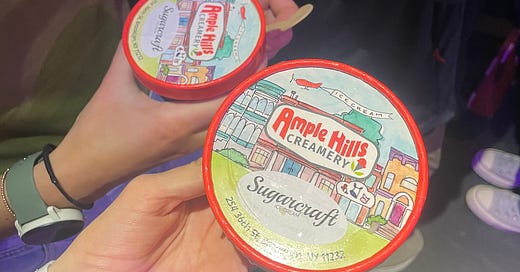

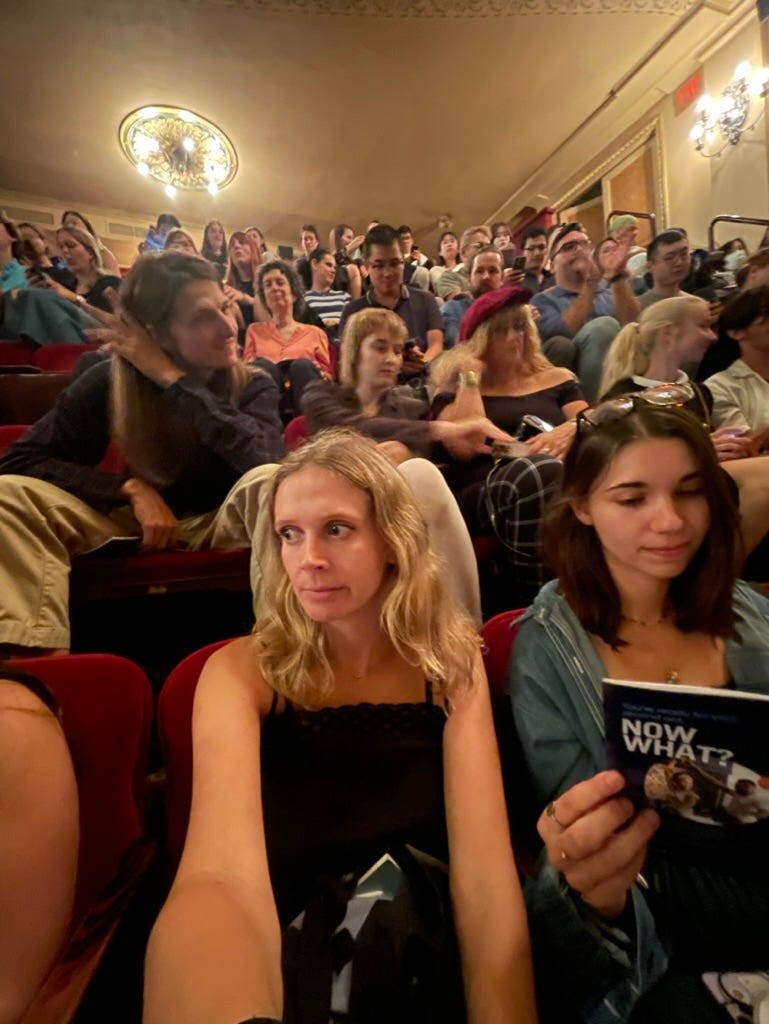
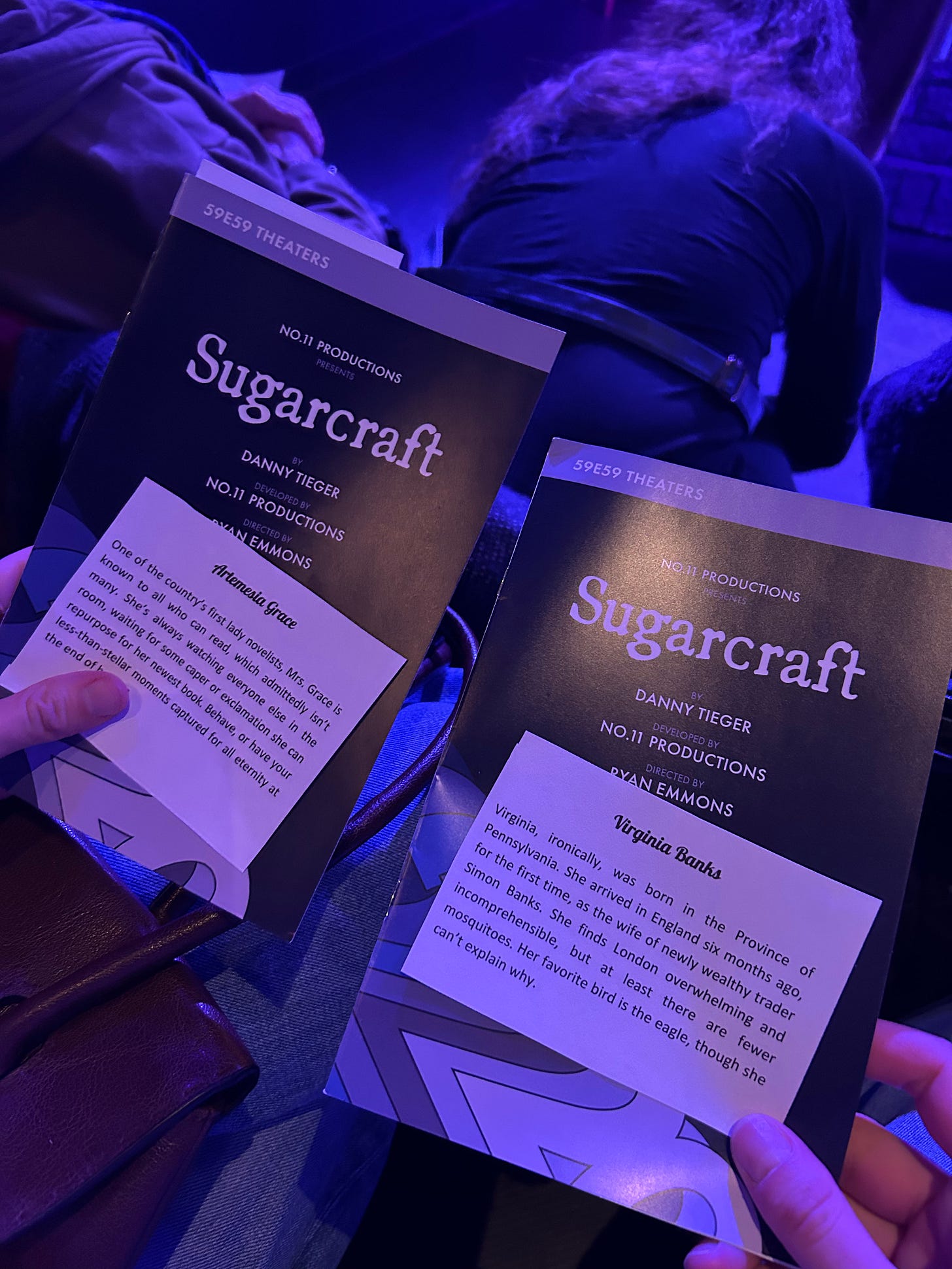

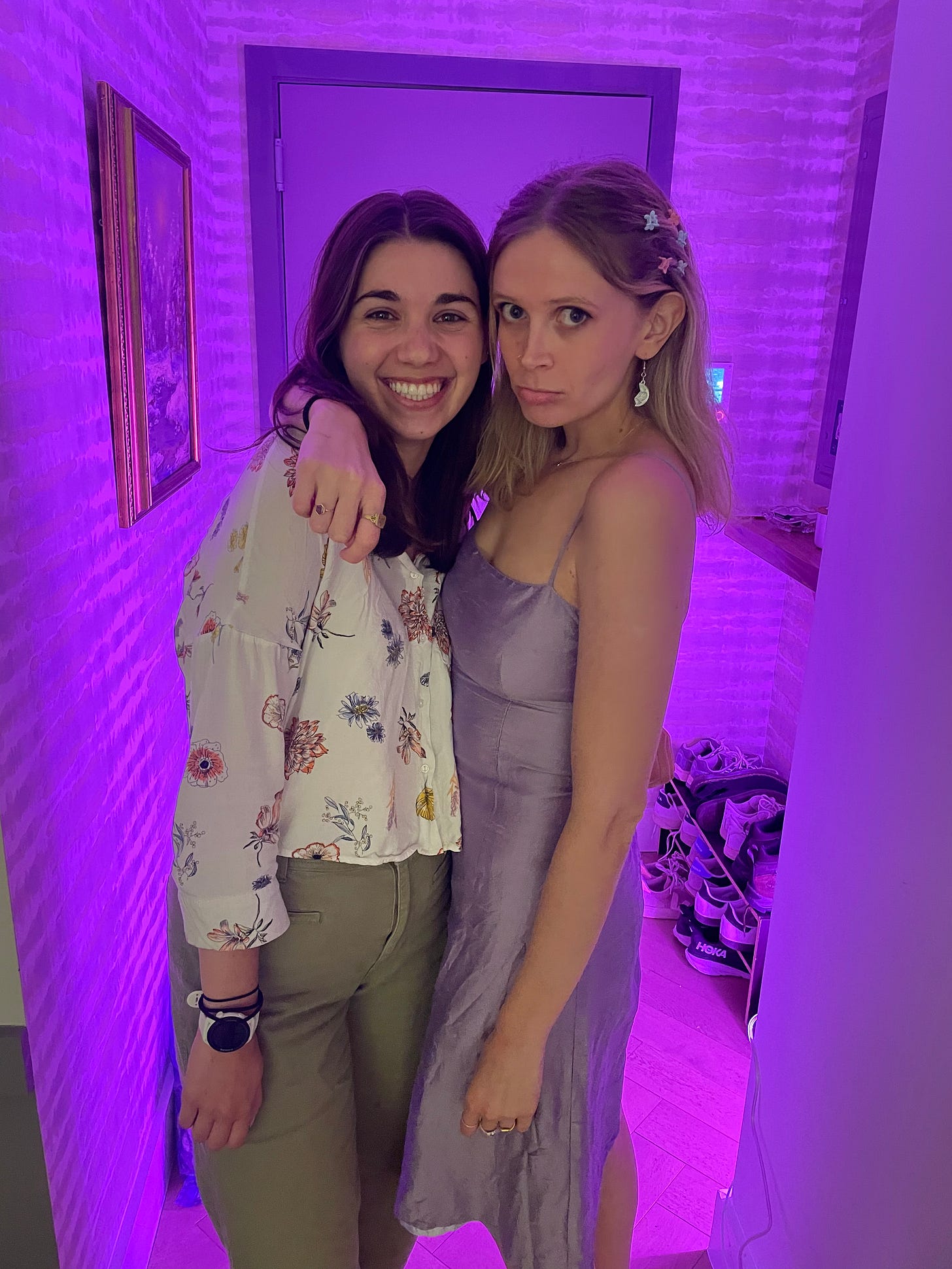

incredible link up. I love to see it!